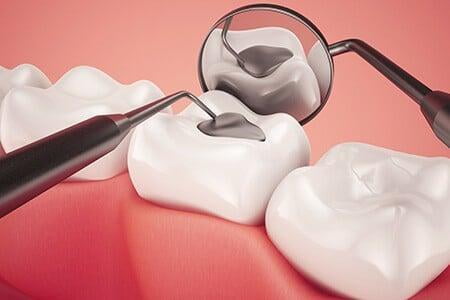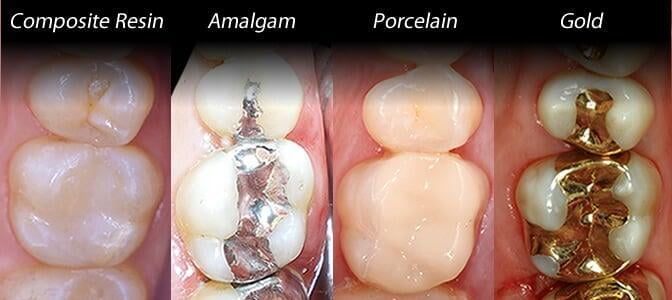WHAT IS DENTAL FILLING ?
Dental filling is a way to restore a tooth damaged by decay back to its normal function and shape. When a dentist gives you a filling, he or she first removes the decayed tooth material, cleans the affected area, and then fills the cleaned out cavity with a filling material.
By closing off spaces where bacteria can enter, a filling also helps prevent further decay. Materials used for fillings include gold, porcelain, a composite resin (tooth-colored fillings), and an amalgam (an alloy of mercury, silver, copper, tin and sometimes zinc).


TYPES OF DENTAL FILLING
- Gold fillings are made to order in a laboratory and then cemented into place. Gold inlays are well tolerated by gum tissues, and may last more than 20 years. However, it is often the most expensive choice and requires multiple visits.
- Amalgam (silver) fillings are resistant to wear and relatively inexpensive. However, due to their dark color, they are more noticeable than porcelain or composite restorations and are not usually used in very visible areas, such as front teeth.
- Composite (plastic) resins are matched to be the same color as your teeth and therefore used where a natural appearance is desired. The ingredients are mixed and placed directly into the cavity, where they harden. Composites may not be the ideal material for large fillings as they may chip or wear over time.
- Porcelain fillings are called inlays or onlays and are produced to order in a lab and then bonded to the tooth. They can be matched to the color of the tooth and resist staining.
HOW DO I KNOW IF I NEED A DENTAL FILLING ?
There are various signs and symptoms where fillings can be required. The symptoms could be as below:
- A hole in your tooth
- Dark spots on the tooth
- Food stuck between certain areas of the teeth
- Chipped or broken tooth
- Sensitivity to hot and cold food and beverage
- Single or multiple cavities
TREATMENT STEPS FOR DENTAL FILLING ?
- The very first step in this process the dentist examines the tooth and if required an X-ray would be done for precise information
- Depending upon the extent of decay, local anesthesia is administered to make the area around the infected tooth numb
- Then the decayed or damaged tooth or the areas around it is prepared for restoration
- A filling is then applied to the area to fill the cavity. The type of filling will depend upon case to case and person to person
- Finally, the finished tooth can be polished to conclude the dental filling procedure
POST-TREATMENT CARE FOR DENTAL FILLING-
- Before you start chewing, make sure that the anesthesia is worn off
- Do not consume anything too hot or too cold if the effect of anesthesia is still on
- You might feel soreness around your gum area, this will last only for a few days
- Avoid hard or sticky food for a few days
- If you feel sensitivity for too long or if your dental fillings come out, visit your dentist immediately
